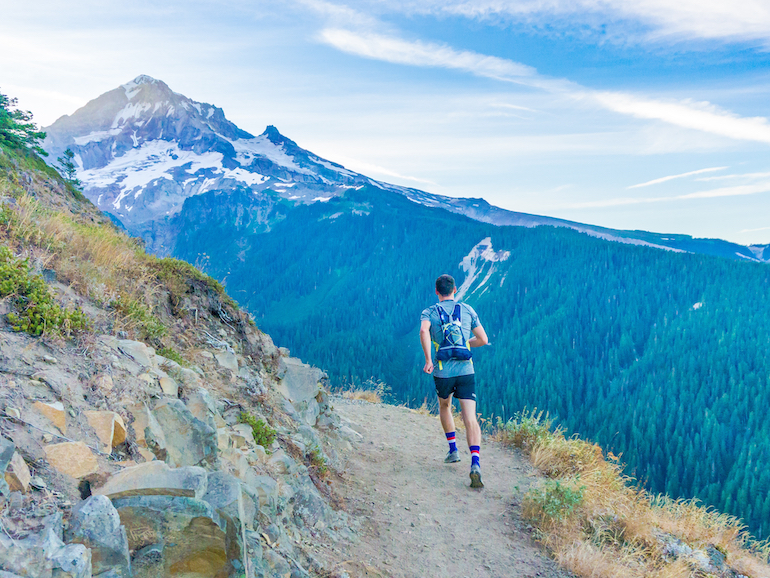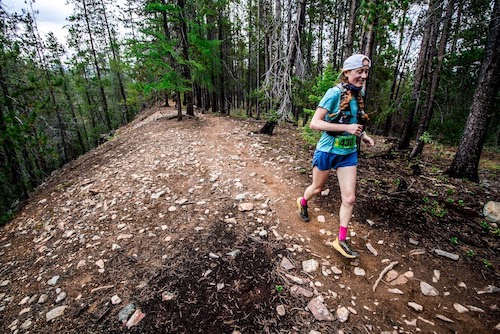ARTICLES
How to Choose Your Next Ultramarathon

What are you most passionate about
The most important thing to consider with race selection is your personal preferences: what lights you up? Everyone is different… While one runner may enjoy a course that has mostly forest service roads, the runner next to them may instead get excited about something on technical trails with a lot of elevation gain and loss. This is important to consider, as you’ll be spending a lot of time doing training that resembles the race over the next few months, and you want to make sure you’ll enjoy it.
If you sign up for a road 50k for example, you will be doing a lot of flat, fast training to prepare. Alternatively, if you sign up for something like Ultra Trail Mont Blanc (UTMB), you’ll be spending a lot of time hiking up and running down mountains, or simulating that if you don’t have access to mountains.
So, how do you get a grasp of what the race course will be like? For starters, spend time on the race website. Look at the course map, and find more information about the individual trails and routes by looking at topographic maps, and resources from the hiking or mountain biking communities. Visuals can be really helpful during this process. See if you can find a race video or the previous years’ photos.
You can also read race reports from previous participants, and if you have friends who have run the race, pick their brain about the experience, and what the course was like. Once you have an idea of what the race is like, picture the training being in a similar style of running, and think about whether that seems really fun to you or not. This is a great way to create an initial shortlist of races. If the training seems fun, then put it in the maybe pile! Then, you can use the additional factors below to narrow down to your favourite/s.

Narrow down your choices based on the time of year
Now that you have a shortlist of races that get you excited, consider the time of year to help you narrow down further.
I always advise athletes to choose races that complement their natural rhythms around seasons. Think about the time of year when you are most naturally inspired to get out for training, and if you can, try to align your race/s right after that timeframe. For example, I have an athlete who loves training in the early morning before work, and she finds it far more enjoyable to do that once the sun rises early in May, June, and July. For this athlete, I would recommend choosing an event in August or September if possible, as that’s naturally going to line up well with her natural rhythms. She’ll be able to do her training in beautiful early morning runs, and it will never feel like a big push to get out the door. As another example, I have friends who are parents with school-age kids, and they prefer to do their goal races in May or June, as that way they can do all of their training while their kids are still in school. Then, once the race is done, they can take time off to be present with their family.
Related to the time of year is considering the temperature and weather. I love racing in the fall, as the temperatures are cooler, and it’s often a beautiful time to be running in the mountains. If you hate running in the heat, that’s a good factor to consider.
The key to successfully completing your race and any goals at the event is to consistently string together high-quality training. Tuning into the season when you naturally want to get out and train is a great way to set yourself up for success!
Choose your distance based on your time available to train
It’s common for races to have multiple options for distances. To decide on which distance to race, think about how much time you have for training. Take a look at your work, family, and life calendar in the 4 months before the race. For a 50k ultra, you will be far more likely to be successful in completing the race if you can commit to training at least 6 hours per week fairly regularly. For longer ultras like 100 km and 100 miles, you should expect to commit 9-10 hours per week routinely. If it seems overwhelming when you think about the time required for a particular distance and your existing priorities, I’d recommend choosing the shorter distance out of the options you’re considering. It’s always better to feel more prepared and relaxed for a given distance, rather than stressed, as you’re more likely to enjoy it!
Many races will let you drop down in distance closer to the event date, but not every race allows this. Check the race policies to be sure!

Consider whether chasing UTMB, Western States, and/or Hardrock is important to you
A complicating factor with race selection for ultras is thinking about whether you want to run UTMB, Hardrock Endurance Run, and/or Western States Endurance Run. These races are so popular that they have their own list of qualifying races and lotteries, and you need to complete eligible qualifiers if you want to enter their lotteries. If you’re dead set on running any of these races, then I’d recommend ensuring that at least one of your races this year aligns with the eligible qualifiers. (Each race lists its eligible qualifiers on its website, which is updated every year.)
Ideally, it lines up that your favourite race happens to be a qualifier for one or more of the famous races, but that’s rarely the case. If you’re lukewarm about whether you want to run these famous races, I’d recommend not constraining your race choices to the races’ qualifiers. You may find yourself registering and attending races that you wouldn’t otherwise love or enjoy, and you may also miss out on some amazing events that are simply not on the list of qualifiers.
Many longer ultra races ask participants to have a qualifying race under their belt, but many are far more relaxed about it. For example, many 100 milers ask that registrants have completed a 50 miler during a time period before the race date, which is usually quite generous.
Don’t do everything this year
The beauty of long-distance running is that it’s a sport we can do for a long, long time. Even though it’s tempting to “enjoy” all those races now, it’s best to resist the urge to sign up for everything right now. I typically advise my ultra athletes to choose a maximum of one main goal race per season, as it does take a while to recover from these efforts. Doing too many races can also be less ideal for training consistency and long-term growth, as it can create a situation of constantly tapering and recovering. Plus, it’s always nice to have distant goals to look forward to!
Alicia Woodside is an endurance runner and coach living in Squamish, BC. She has completed over 40 ultra-marathons and ran for Canada in the 50-mile trail and 100km road events.
If you have any questions about training, please send them to info@getoutheremag.com and we will see if we can answer them in a future column!

 Tweet
Tweet Share
Share